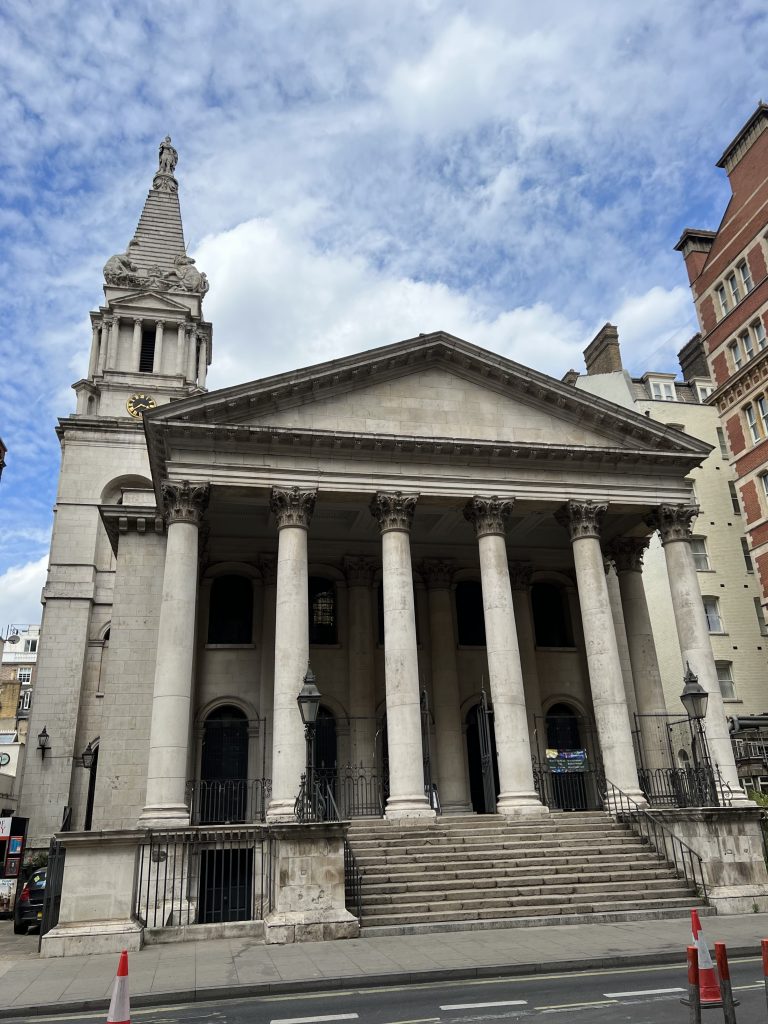Set in a tight site on a busy road in Bloomsbury, St. George’s towers over the street below. It is Grade I listed, so in the top 2.5% of protected buildings. Wherever you walk around the surrounding streets, you can never get a complete view, but partial glimpses, particularly of the tantalising stepped steeple with lions and unicorns encircling it. Consecrated in 1731, this was one of the so-called ’50 churches’ from an Act of Parliament in 1711 to encourage the building of grand new Anglican churches in smart, developing areas, as Bloomsbury was at the time. The churches were funded by a tax on coal imports and Nicholas Hawksmoor was both one of the commissioners of the scheme and a leading architect, although only 12 churches were ever built.
The style is English Baroque – grand and highly decorated – and often inspired by architecture seen and reported on by those undertaking a Grand Tour of Europe and beyond. Thus, the frontage of tall Corinthian columns with a triangular pediment is said to be based on the Temple of Bacchus at Baalbec, the spire by Pliny’s description of the Mausoleum at Halicarnassus, and an entirely different rear of the building by a drawing of an Italian palazzo. The spire is topped by a statue of George I in a Roman toga, which was an object of much local ridicule at the time. Perhaps sadly, Hawksmoor started his career as an apprentice to the great Architect Christopher Wren and never had the luxury of travel to distant shores to view any of these wonders that he derived such inspiration from for himself.

